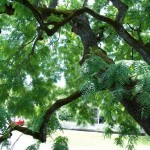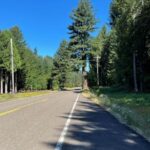10th Mountain Division Memorial Grove

This grove of mixed trees species was started as a memorial for Oregon members of the 10th Mountain Division who fought in Italy during WWII. They were the only US Army Division trained in mountain warfare and were trained to fight on skis.
In 1996 the first tree in this memorial grove was planted. The grove is maintained by descendants and discharged members of the 10th Mountain Division.
Visit these trees
US26, milepost 54, eastbound, …
 Payments
Payments









































































